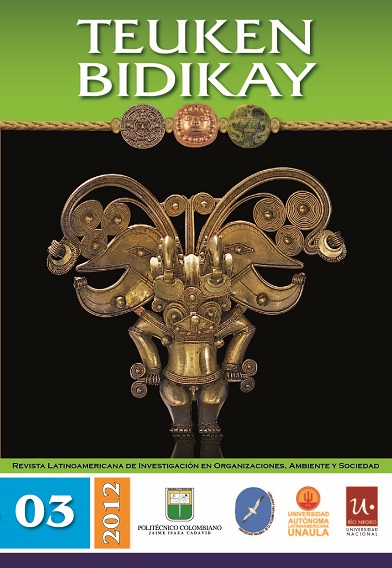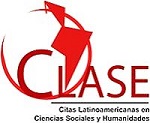La relación ahorro - crecimiento - inversión en un siglo de historia argentina
Palabras clave:
crecimiento rconómico, ahorro/inversión, hipótesis del Ciclo Vital, teoría postkeynesiana, Ramsey, causalidad de Granger, desarrollo económico - ArgentinaResumen
¿El ahorro causa el crecimiento como sugiere el enfoque de la oferta, o el crecimiento impulsa el ahorro como afirma el enfoque keynesiano basado en la demanda? Como ambos enfoques predicen la correlación entre estas variables, la evidencia en este sentido no apoya ninguna hipótesis en particular. Para dilucidar qué enfoque tiene más capacidad explicativa, se estimaron test de causalidad à la Granger para Argentina durante 1914-2003 entre las variables ahorro, inversión y crecimiento. Se concluyó que el ahorro no causa el crecimiento, mientras que por el contrario, el crecimiento causa el ahorro. Al incorporar la inversión en las estimaciones los resultados se mantuvieron, pero se ajustan mejor al relato histórico del período, brindando confianza acerca de la validez de los resultados. Estos coinciden con recientes investigaciones empíricas y con el mecanismo de transmisión keynesiano basado en la demanda. Se aplicaron diferentes técnicas incluyendo el procedimiento de Toda y Yamamoto.
Métricas de artículo
Resumen: 451 PDF: 225Citas
AGRAWAL, Pradeep (2001). “The relation between savings and growth: cointegration and causality evidence from Asia”. En: Applied Economics, 33, 499-513.
ALGUACIL, Maite, Ana CUADROS y Vicente ORTS (2004). “Does Saving Really Matter for Growth? México (1970-2000)”. En: Journal of International Development, 16, 281-290.
ANDERSSON, Björn (1999). “On the Causality Between Saving and Growth: Long and short Run Dynamics and Country Heterogeneity”. En: Uppsala University, Department of Economics, Working Paper Series nº 1999:18.
ATTANASIO, Horacio P., Lucio PICCI y Antonello SCORCU (2000). “Saving, growth and investment: a macroeconomic analysis using a panel of countries”. En: The Review of Economics and Statistics vol. 82, no. 2, pp. 182-211(30).
CÁRDENAS, Mauricio y Andrés ESCOBAR (1997). “Determinants of savings in Colombia 1925-1994”. En: Banco Interamericano de Desarrollo, Documento de Trabajo R-310 (septiembre).
CARROLL, Christopher D. y David N. WEIL (1994). “Saving and growth: a reinterpretation”. En: Carnegie-Rochester Conference Series on Public Policy 40, North-Holland NBER Working Paper Series Nº 4470 (septiembre 1993).
CHANG, Gene Hsin (1999). “Sustaining Rapid Growth in Poland: What is the Primary Concern?”. Disponible en internet: http://ssrn.com/ abstract=87140.
CLAUS, I., D. HAUGH, G. SCOBIE y J. TÖRNQUIST (2001). “Saving and growth in an open economy”. En: Treasury Working Paper New Zealand, 01/32.
DE LA FUENTE, Ángel (1995). “Notas sobre la economía del crecimiento”. En: Papers de Treball, Institut d’Anàlisi Econòmica, UAB, octubre.
DOMAR, Evsey D. (1946). “Capital expansion, rate of growth, and employment”. En: Econométrica, vol.14 (2), 137-147.
EASTERLY, W. (2001). En búsqueda del crecimiento. Barcelona: Editorial Antoni Bosch.
GRANGER, C. W. J. (1969). “Investigating causal relations by econometric models and cross spectral methods”. En: Econométrica, vol. 37, 424-438.
HARROD, R. F. (1939). “An essay in dynamic theory”. En: The Economic Journal, vol.49, Nº 193 14-33, marzo.
JAPELLI, Tullio y Marco PAGANO (1998). “The determinants of saving: lessons from Italy”. En: Centro Studi in Economia e Finanza Working Paper, nº1 (marzo).
JUDSON, Ruth A. y Ann L. OWEN (1996). “Estimating Dynamic Panel Data Models: A Practical Guide for Macroeconomists”. En: Federal Reserve Board of Governors (enero).
JOHANSEN, Søren (1991). “Estimation and Hypothesis Testing of Cointegration Vectors in Gaussian Vector Autoregressive Models”. En: Econométrica, 59, 1551-1580.
KEYNES, J. M. (1936). The General Theory of Employment, Interest and Money. New York: Editorial Harcourt.
KING, Robert G. y Ross LEVINE (1994). “Capital fundamentalism, economic development, and economic growth”. En: Carnegie-Rochester Conference Series on Public Policy 40, 259-292, North-Holland.
KÓNYA, László (2004). “Savings and Growth: Granger Causality Analysis with Bootstrapping on Panels of Countries”. En: La Trobe University Australia. Disponible en internet: http://www.eea-esem.com.
LANTERI, L.N. (2004). “Ahorro y crecimiento: alguna evidencia para la economía argentina, 1970-2003”.
LÜTKEPOHL, Helmut (1993). Introduction to Multiple Time Series Analysis. Segunda Edición. Berlin: Editorial Springer-Verlag.
MADDISON, A. (1992). “A Long-Run Perspective of Saving”. En: Scadinavian Journal of Economics, 94(2), pp.181-196.
MANKIW, Gregory N., David ROMER y David N. WEIL (1990). “A contribution to the empirics of economic growth”. En: NBER Working Paper 3541, diciembre.
MARSHALL, Alfred (1907). Elements of Economics of Industry. Being the First Volume of Elements of Economics. London: Editorial Elibron Replica Classics, Macmillan.
MAVROTAS, George y Roger KELLY (2001). “Old Wine in New Bottles: Testing-Causality Between Savings and Growth”. En: The Manchester Scholl Supplement, 1463-6786, 97-105.
MODIGLIANI, F. (1986). “Life Cycle, Individual Thrift, and the Wealth of Nations”. En: The American Economic Review, vol. 76, nº 3, (junio), 297-313.
OGLIETTI, G.C. (2008). Demanda y crecimiento. Tesis Doctoral. Barcelona: UAB. Disponible en internet: http://www.tesisenxarxa.net/TDX-0523108- 154017/index.html
PANETTIERI, J. (1969). Síntesis histórica del desarrollo industrial argentino. Buenos Aires: Editorial Macchi.
SALTZ, Ira S. (1999). “An Examination of the Causal Relationship Between Savings and Growth in the Third World”. En: Journal of Economics and Finance, vol. 23, Nº 1, (verano) 90-98.
SINHA, Dipendra y Tapen SINHA (1998). “Cart before the horse? The saving-growth nexus in Mexico”. En: Economic Letters 61, 43-47.
SOLOW, Robert M., (1956). “A contribution to the theory of economic growth”. En: The Quarterly Journal of Economics vol. 70 (1), 65-94.
TODA, Hiro Y. y Taki YAMAMOTO (1995). “Statistical inference in vector autoregressions possibly integrated processes”. En: Journal of Econometrics 66, 225-250.





















